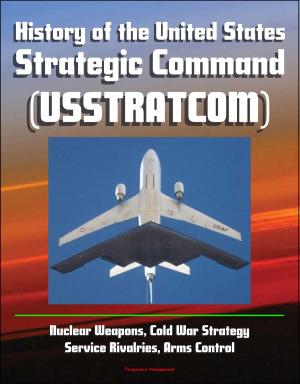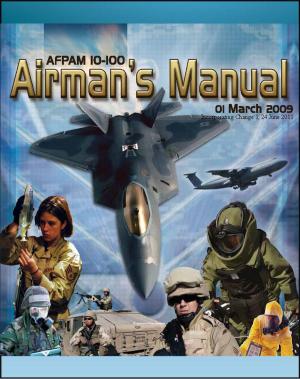21st Century U.S. Military Manuals: Physical Security Army Field Manual - FM 3-19.30 - Building Security Concepts including Barriers, Access Control (Value-Added Professional Format Series)
Nonfiction, Social & Cultural Studies, True Crime, Political Science| Author: | Progressive Management | ISBN: | 9781465847737 |
| Publisher: | Progressive Management | Publication: | September 6, 2011 |
| Imprint: | Smashwords Edition | Language: | English |
| Author: | Progressive Management |
| ISBN: | 9781465847737 |
| Publisher: | Progressive Management |
| Publication: | September 6, 2011 |
| Imprint: | Smashwords Edition |
| Language: | English |
Professionally converted for accurate flowing-text e-book format reproduction, the Physical Security Army field manual (FM 3-19.30) "sets forth guidance for all personnel responsible for physical security." It includes practical up-to-date antiterrorism building security concepts such as barriers, lighting, alarms, access control, security forces, and personal protection.
Contents in the manual include:
* Protective systems design approach * Vehicle bombs * Speed control * Exterior attack protection * Building elements * Standoff weapons * Ballistics * Covert entry and insider compromise * Surveillance and eavesdropping * Protective barriers * Security lighting * Electronic security systems * Access control * Lock and key systems * Security forces * In-transit security * Inspections and surveys * Threat and vulnerability assessment
It is the basic reference for training security personnel, intended to be a "one-stop" physical security source for the Department of Defense (DOD), the Department of the Army (DA), and other proponents and agencies of physical security. Prevention and protection are the two primary concerns of physical security. Both serve the security interests of people, equipment, and property. These interests must be supported at all staff and command levels; and this support must be unified in joint, multinational, and interagency operations. Support to joint, multinational, and interagency operations relies on the fact that the Army will not conduct operations alone. Additionally, force-projection operations conducted by the military will involve the integration of war-fighting capabilities with stability and support operations. This manual's primary focus is the articulation of a balanced understanding of physical security for joint, multinational, and interagency operations throughout the environments of peacetime, conflict, and war. Physical security must integrate the various capabilities of joint, multinational, and interagency operations in pursuit of a seamless connection between the strategic, operational, and tactical levels of war. Physical security must also address an expanded range of threats that embraces not only traditional threat components of war, but also nontraditional threats generated by guerrillas, terrorists, criminals, and natural or man-made disasters. In addition, physical security must address the concept of Homeland Defense due to the aforementioned threats. Homeland Defense is the military's role in the United States (US) government's principal task of protecting its territory and citizens. Homeland Defense includes supporting domestic authorities for crisis and consequence management with regard to weapons of mass destruction (WMD), protecting national-security assets (such as installations) and deploying forces and ensuring the availability, integrity, and adequacy of other critical assets, deterring and defending against strategic attacks while maintaining freedom of action through antiterrorism and force-protection operations."
"With this in mind, it is essential to address the five pillars of force protection—combating terrorism, physical security, personal security, law enforcement, and operations security (OPSEC). Physical security is a central component of force protection and provides an integrated venue to express support for operations. Physical security is a primary-leader task and an inherent part of all operations to protect soldiers, family members, civilians, and resources."
This reproduction includes FM-1, The Army Field Manual, a capstone manual containing the vision for the Army - sold separately for $5.99. FM 1 establishes the fundamental principles for employing Landpower.
This is a privately authored news service and educational publication of Progressive Management.
Professionally converted for accurate flowing-text e-book format reproduction, the Physical Security Army field manual (FM 3-19.30) "sets forth guidance for all personnel responsible for physical security." It includes practical up-to-date antiterrorism building security concepts such as barriers, lighting, alarms, access control, security forces, and personal protection.
Contents in the manual include:
* Protective systems design approach * Vehicle bombs * Speed control * Exterior attack protection * Building elements * Standoff weapons * Ballistics * Covert entry and insider compromise * Surveillance and eavesdropping * Protective barriers * Security lighting * Electronic security systems * Access control * Lock and key systems * Security forces * In-transit security * Inspections and surveys * Threat and vulnerability assessment
It is the basic reference for training security personnel, intended to be a "one-stop" physical security source for the Department of Defense (DOD), the Department of the Army (DA), and other proponents and agencies of physical security. Prevention and protection are the two primary concerns of physical security. Both serve the security interests of people, equipment, and property. These interests must be supported at all staff and command levels; and this support must be unified in joint, multinational, and interagency operations. Support to joint, multinational, and interagency operations relies on the fact that the Army will not conduct operations alone. Additionally, force-projection operations conducted by the military will involve the integration of war-fighting capabilities with stability and support operations. This manual's primary focus is the articulation of a balanced understanding of physical security for joint, multinational, and interagency operations throughout the environments of peacetime, conflict, and war. Physical security must integrate the various capabilities of joint, multinational, and interagency operations in pursuit of a seamless connection between the strategic, operational, and tactical levels of war. Physical security must also address an expanded range of threats that embraces not only traditional threat components of war, but also nontraditional threats generated by guerrillas, terrorists, criminals, and natural or man-made disasters. In addition, physical security must address the concept of Homeland Defense due to the aforementioned threats. Homeland Defense is the military's role in the United States (US) government's principal task of protecting its territory and citizens. Homeland Defense includes supporting domestic authorities for crisis and consequence management with regard to weapons of mass destruction (WMD), protecting national-security assets (such as installations) and deploying forces and ensuring the availability, integrity, and adequacy of other critical assets, deterring and defending against strategic attacks while maintaining freedom of action through antiterrorism and force-protection operations."
"With this in mind, it is essential to address the five pillars of force protection—combating terrorism, physical security, personal security, law enforcement, and operations security (OPSEC). Physical security is a central component of force protection and provides an integrated venue to express support for operations. Physical security is a primary-leader task and an inherent part of all operations to protect soldiers, family members, civilians, and resources."
This reproduction includes FM-1, The Army Field Manual, a capstone manual containing the vision for the Army - sold separately for $5.99. FM 1 establishes the fundamental principles for employing Landpower.
This is a privately authored news service and educational publication of Progressive Management.















